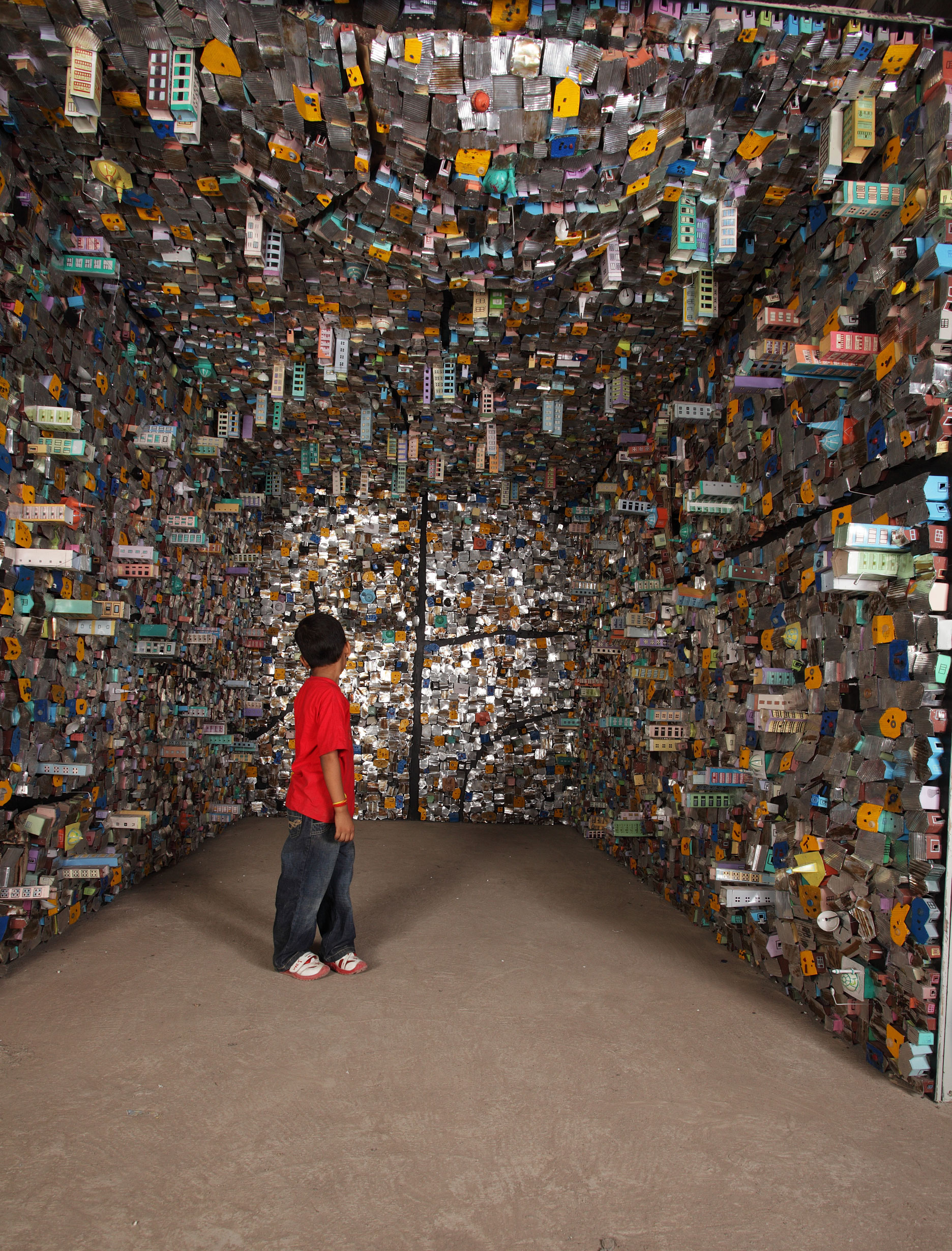A new dialogue between Indian modern and contemporary art that debates "constructions" as a two-fold phenomenon opened last week at the Kiran Nadar Museum of Art in Saket. The exhibit, titled Constructs | Constructions, comprises the works of 30 artists across generations. It explores the urban make-up and the many built structures within it that influence our living and affect our experiences. At another level, the show reveals the creative processes that artists subjectively employ to "construct" a work of art. The use of materials and mediums ranges from paint, print, stone, metal, found or recycled objects, and the myriad forms that each is shaped into is thematically assembled into the exhibition.
The show purposefully opens with the work Murmur by Manisha Parekh wherein 30 laboriously twisted knot-like forms of jute are mounted on a burnt orange wall. The crawling organic sculptures convey a raw rhythmic energy, and a distinct inspiration from craft processes. Another sort of energy is embodied in the translucent architecture of graphite on paper in Grid Corridor.
Exploring the realm of spatial memory as visual language, this work by Seher Shah breaks down elements of a structure into their basic forms: columns, planes, grids that are repeated and disjointed to reveal the fissures occurring between natural and built relationships. Repetition is again manifest in the five photographs from Dayanita's Singh's series Museum of Vitrines, displayed alongside Shah's drawing. The images focus on the mode of display: an empty vitrine, instead of the treasured object, thereby reimaginingthe historicity of archival material.
The irony of museological display is brought to the fore in an inverted roof made of terracotta tiles by L.N. Tallur, titled Veni, Vidi, Vici (I came, I saw, I conquered). Delving into colonial history, the miniature hatha yogi figures atop the tiles tell us about ethnological display criteria while the roof itself is a reference to the Commonwealth Tiles Factory set up in Karnataka to provide employment to local populations during World War I. The conquest of territory alongside that of the physical body reveals the complicated dynamic of colonialism and its resultant cultural imperialism.



Next, I come upon a room of dioramas. Masooma Syed's series of theatrical stages with cinematic figures and cut outs from newspapers framed within cardboard and alcohol cartons reveal the staged meanderings of human emotions. Nandita Kumar's eLEmeNT: EaRTh is a micro-system contained in a glass blown jar, a mimicking of nature through technology and sound. And the photographed ruins of dioramas by Yamini Nayar contain abandoned or destroyed landscapes within their frames.
Ganesh Haloi, Velu Vishwanathan and Mariam Suhail present abstracted landscapes whereas Hema Upadhyay, Srinivas Prasad and Gigi Scaria present immersive environments that relate to the precariousness and anxiety of life in the metropolis. From imagined to lived spaces, the viewer's perception is constantly challenged and dislocated with each work and its observation or experience.
The occurrence of time and loss, of erasure and regeneration is poetically addressed in Sudarshan Shetty's Waiting for others to arrive, a single channel video that takes the viewer from the inside of a small home to the exterior of the colonial building it once was, all the way up to a moment from memory where a child plays in its pillared verandah. Framed as a triptych to suggest the inheritance of three families and the smaller confines in which they each now reside, a woman plays three pieces of classical music punctuated by the crash of a china cup that slowly makes its way off a table to the ground.
In the works of modern masters F.N. Souza, S.H. Raza and Ram Kumar, we discover an exploration of the dark and enigmatic, in terms of both architecture and psychological allusions. These expressionist landscapes map memories of places visited and others that are purely meditated. The show concludes with the works of Zarina Hashmi; a suite of 36 prints titled Home is a Foreign Place and another of 25 collages titled Folded House. Narrations of constant journeying, migration and loss are echoed in the minimalist markings of these works.
Constructs | Constructions leads the viewer through the visual imagery of built environments, often inviting us to be a part of an artist's construction and to experience the materiality of their world as a parallel to the one we all share. But which is more real?
The show is a successful iteration of how we occupy space, both mentally and physically, an observation of the everyday and a reading of the causality of our actions. Constructs | Constructions remains on view until 15 December.
